Adding Aftermarket Gauges to a 1966/1967 Cluster
Contrary to popular belief the RPO U14 Special Instrumentation or RPO U16 Tachometer options were not standard on the SS396 nor were they limited to the SS396 series. There are differences and similarities between the basic 1966 and 1967 instrument cluster which is shown on the 66/67 Cluster ID page and might be something you may wish to refer to.
There are several basic instrument clusters for both 1966 and 1967. A 1967 basic instrument cluster can be easily spotted by the presence of the BRIGHT (high beam) indicator on the speedometer face. See the 66/67 Cluster ID page link above for photos of the differences.
The primary focus of this article is to show you how to add aftermarket gauges to a non-factory gauge cluster. Regardless of the year Chevelle (1966 or 1967) you are converting, you should try to pick up a 1966 cluster since it does not have the BRIGHT (high beam) indicator on the speedometer face although the same procedures would apply to any 1967 cluster.
The back side of a factory gauge cluster. Note the BRIGHT and BRAKE warning lamps have one lamp socket each. The remaining lamp sockets are for dash illumination. Hard to see in the first photo but the wire colors are stamped on the cluster to assist assembly workers in getting the correct wires in the correct sockets.

This is the back side of this 1967 non-gauge cluster. Note the warning
lamp sockets. In the first photo there are two for the driver's right
side warning lamps and two for the driver's left side warning lamps.
In the bottom photo also note the lamp socket above the two warning
lamps for the BRIGHT (high beam headlamp) indicator. All other lamp
sockets are for dash illumination. The wire colors are also stamped
on the cluster to help assembly get the right bulbs in the right sockets.
From driver's left to right:
Oil pressure - pink and dark blue
Water temperature - pink and dark green
High beam - green
Generator - pink and brown
Brake - pink and tan
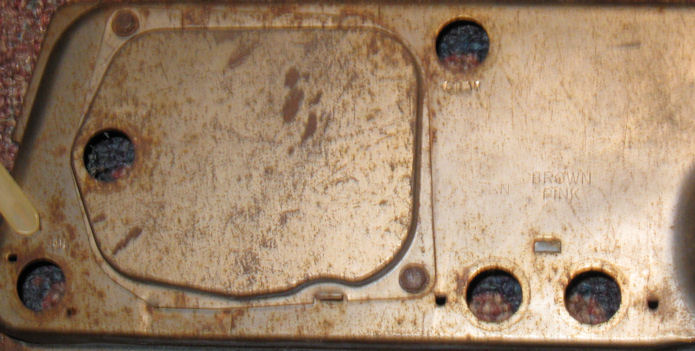
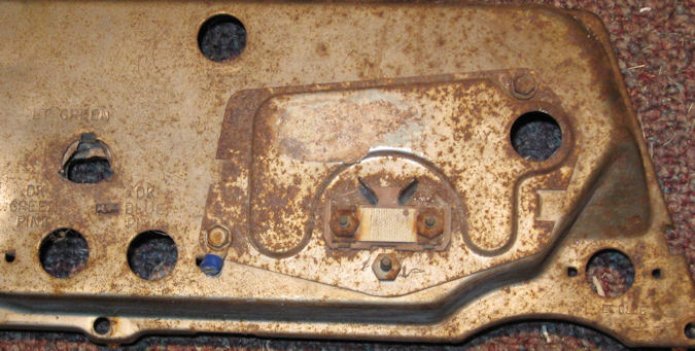
The clock and fuel gauge assemblies mount to the cluster differ between factory gauge clusters and non-gauge clusters. Most aftermarket gauges are designed for non-gauge clusters and have correct mounting for these clusters.

This aftermarket oil pressure & water temperature mounts to the cluster and is designed to fit a non-gauge cluster. If ordering an aftermarket set, some manufacturers offer both. One for factory non-gauge clusters and one for factory gauge clusters. Most also offer either an amp gauge or voltmeter and you'll have to decide which best suits your needs.
The mounting of the two gauges along with the presence of the two warning lamp sockets is a giveaway these is an aftermarket setup for a non-gauge cluster.
More things to consider if you're using a non-gauge cluster for your conversion. The tunnel piece that feeds light from the lamps to the plastic lens. A non-gauge cluster uses a tunnel piece that is divided into two sections so one lamp doesn't light up both lenses like the one immediately below.
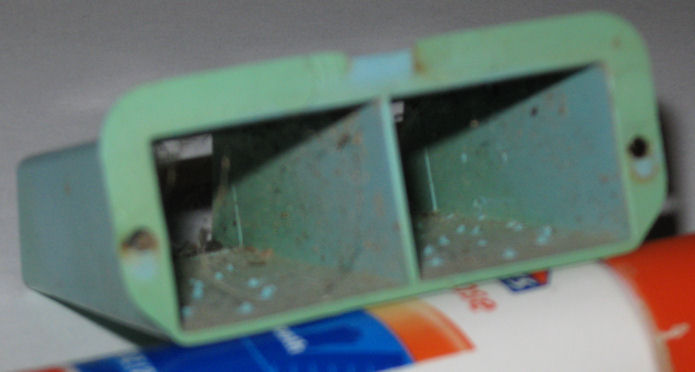
A factory gauge dash has only one lamp per side so a single tunnel is used to insure all of the light from the bulb reaches the lens.
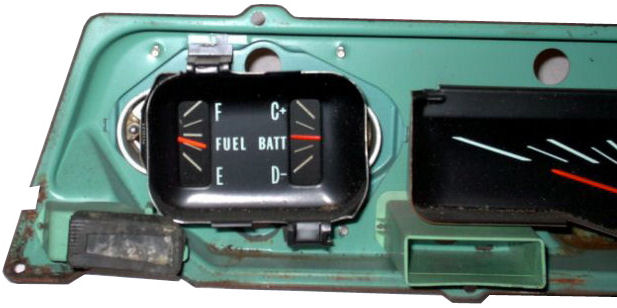
To insure you get enough light to the BRIGHT and BRAKE lenses, you may want to do one of two things. Either double up on the lamps for each lens or remove the center divider in the tunnel piece. One might be cautious on the BRIGHT lens and only use one lamp since it may be fairly bright and distracting driving at night with your high beams on.
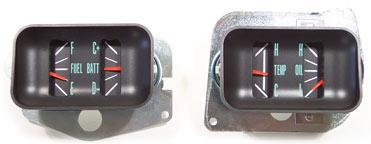
Reproduction gauges are easy to spot. Note the letter spacing on the FUEL || BATT factory gauge compared to the letter spacing in the reproduction set in the image immediately above. The reproduction set has letters much closer together.

 Home
Home Decode
Decode Tech
Tech Tools
Tools Dale's Coins/CDs
Dale's Coins/CDs Contact
Contact Chevelle
of the Month
Chevelle
of the Month Things
For Sale
Things
For Sale Custom
Stickers
Custom
Stickers